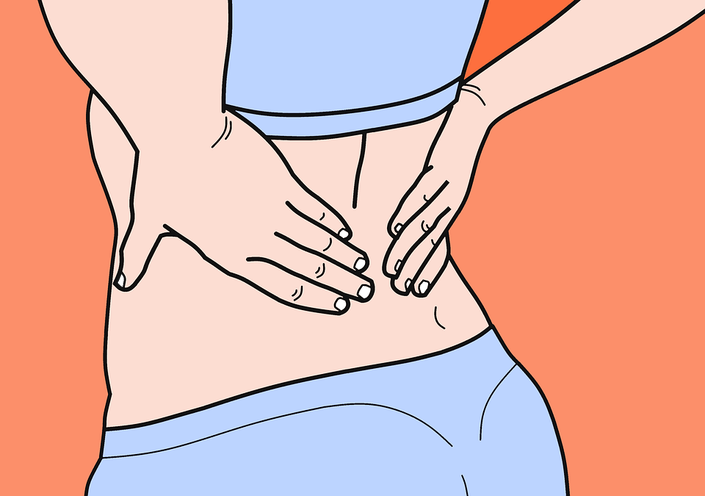SPINAL DECOMPRESSION THERAPY
THE BIG FOUR
- HERNIATED DISCS: Spinal Discs are made up of layered rings of ligaments called the Annulus Fibrosus. These outer rings are what hold the disc’s jelly center (Nucleus Pulposus) in place. If you were to cross-section a Spinal Disc, it would look a lot like the rings of a tree stump. If the innermost layers of the annulus begin to tear, the nucleus begins to “push” its way toward the outside, creating a disc “bulge“. When a disc bulge is large enough to press on the spinal cord and / or the spinal nerves, it is called a Disc Herniation or Rupture. If the nucleus leaks outside of the annulus, the problem is much more serious and is usually referred to as a Prolapsed Disc. Be aware that these terms are sometimes used interchangeably.
- DEGENERATIVE DISCS: Spinal Discs have no blood supply. This makes cellular “exchange” difficult to say the least. The only way for a disc to get nutrients, water, and oxygen into the disc, and get metabolic waste products out, is to act as its own pump. When the disc moves, it creates a pumping action that moves fluid in and out. Poor movement causes poor exchange. This is why abnormal disc motion causes degeneration (thinning of the disc, bone spurs, calcium deposits), and disc degeneration leads to even worse motion. This process is a vicious cycle. Sometimes this process of degeneration will be referred to as Spondylosis or Degenerative Disc Disease. Although there are outside factors that contribute to this process (smoking for instance), make no mistake —- Spinal Degeneration is a mechanical process, not a disease. Referring to it as a “disease” is largely a marketing ploy.
- SPINAL STENOSIS: The word “stenosis” refers to the constriction of a tube. Spinal Stenosis is the shrinkage of the tube within the spinal column called the Central Canal. The Spinal Cord travels inside the Central Canal. In order to add stability to the spinal column and protect the spinal cord from irritation, the Central Canal is lined with ligaments. Due to old injuries or the normal aging process, these ligaments can hypertrophy (thicken) and “buckle” or “bow” into the Central Canal. As this happens, the Central Canal looses more and more space until it reaches the point where there is constant irritation of the Spinal Cord and / or Spinal Nerves.
- FACET SYNDROME: The facets are the four small joints on the back of each vertebrae (two superior facets and two inferior facets). The facets have a rich nerve supply that can cause a great deal of pain when irritated. Just like Spinal Discs, facet joints that fail to move properly over time, wear out. This is usually called Facet Disease or Facet Syndrome.
SCIATICA: Because all of these problems lead to impingement of nerves, the nearly-universal symptom of all these problems is pain. Because these same nerves travel into the arms and legs; irritating them can lead to various problems in the extremities (pain, weakness, pins & needles, numbness, tingling, etc). In the legs, this problem is commonly referred to as sciatica. In the arms, it is usually called “radiculopathy“.
However, once you find out you have one or more of the “Big Four”, everything turns to AVOIDING SURGERY (you already know how poorly they work much of the time), A LIFETIME OF DRUGS, and dangerous / degenerative CORTICOSTEROID INJECTIONS. Covering symptoms is never the solution. You have to actually work toward a solution. The first thing to remember is that you are not going to “cure” any of these problems. In other words, once damage is done, nothing you do is going to make you sixteen years old again. But if you are willing to work at it, there are a number of things that you can do to help yourself with these problems.
- CHANGE YOUR DIET: Although this is not difficult to understand, it is not always easy to follow. I suggest that you eat a diet based on WHOLE FOODS. Water keeps the disc hydrated, so drink plenty of water, and learn what it means to CONTROL YOUR BLOOD SUGAR. You also need to understand that all INFLAMMATORY PROCESSES in the body are driven by diet and lifestyle. Healthy Fats are anti-inflammatory; TOO MANY GRAINS and BAD FATS drive inflammation, and the plethora of health problems related to it. Eating this way will also help you LOSE ANY EXCESS WEIGHT you might be carrying — a real detriment to a healthy spine.
- DON’T SMOKE: Everyone knows that SMOKING is bad for your lungs. There is actually quite a bit of medical research proving that it is bad for your spine as well. If you smoke, you starve every cell in your body for OXYGEN. As you might imagine, this is a very bad thing as it prevents healing and promotes decay.
- MOVE: I just told you that the only way the Spinal Discs are nourished and hydrated is via joint motion. Regular exercise is critical to put joint motion back into the spine. I also recommend that you strengthen your spine with PLANKS instead of back-destroying situps and crunches. I am not so concerned about what you do exercise-wise (swim, bike, walk, lift weights, Pilates, Zumba), just that you do something on a regular basis. Exercise balls provide an excellent (and simple) way to build stability into your spine as well.
- CHIROPRACTIC ADJUSTMENTS: Although chiropractic is certainly no “cure-all”, it helps keep both alignment and motion in the spine. Knowing what you know thus far about the both the NERVE SYSTEM and the primary causes of SPINAL DEGENERATION, periodic adjustments make a lot of sense.
- INVERSION: Although I have never sold them myself, I have been a huge fan of INVERSION TABLES since they came out in their current form about 20 years ago. The price has come down to where anyone can afford one, and for smaller people, you should be able to get one for about a hundred bucks. However, for most people I recommend the Ironman 4000. It is what I own, costs $179.00, is built like a tank, and is available at Amazon or Mal Wart. The key to inversion is doing it for a few minutes each day, and not inverting at too steep an angle. Unless you are a 15 year old high school athlete, you have no reason to invert deeper than 45 degrees. Many people do best “hovering” just below parallel (less than 15 degrees).
- SPINAL DECOMPRESSION THERAPY: For people with chronic severe back pain caused by one or more of the “Big Four” there is hope for you. Most of you have figured out that SPINAL SURGERY is not something you want to rush into. The outcomes are frequently terrible, and many people end up having to have additional back surgeries to fix the damage caused by the surgery before it. Spinal Decompression Therapy is certainly not the be all, end all, for every case of chronic back problems, but for many people it provides AMAZING RESULTS. Interestingly enough, these results are BACKED BY A SIGNIFICANT AMOUNT OF RESEARCH. Non-Surgical Spinal Decompression Therapy is a safe, gentle, form of disc therapy that restores function to injured or degenerative Spinal Discs via a computerized logarithmic pull / relax pattern of spinal distraction.

